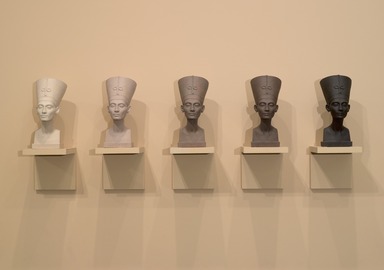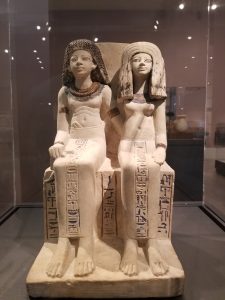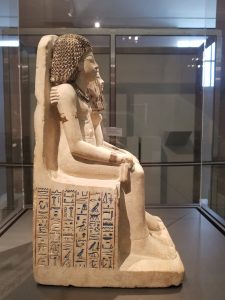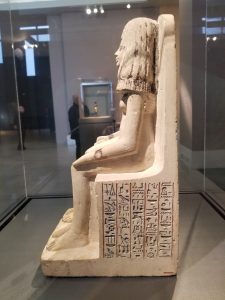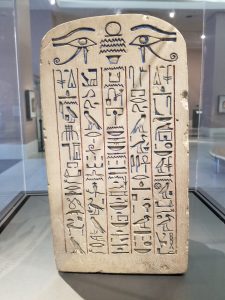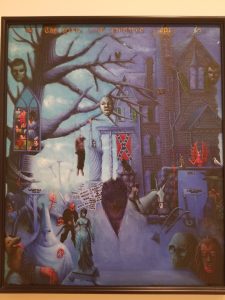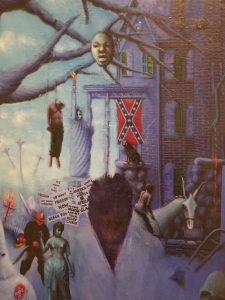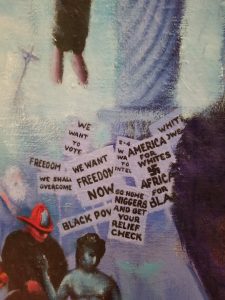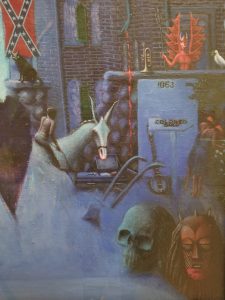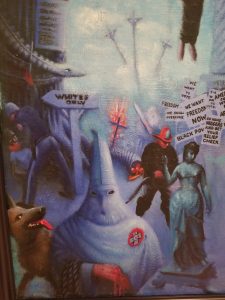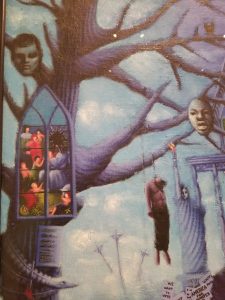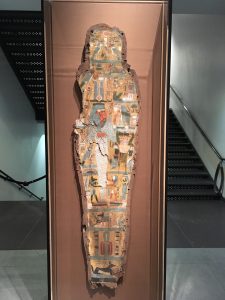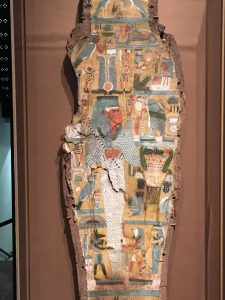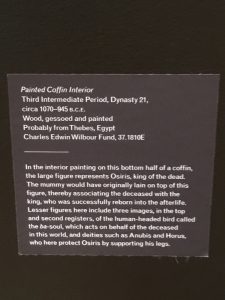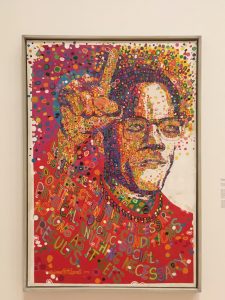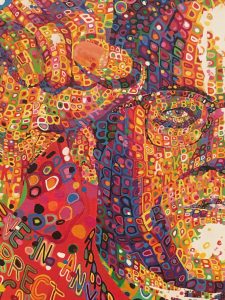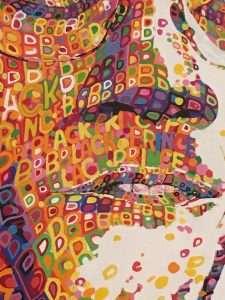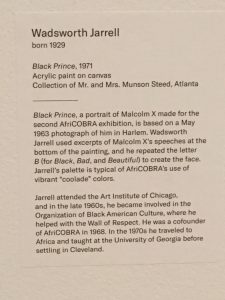Part 1
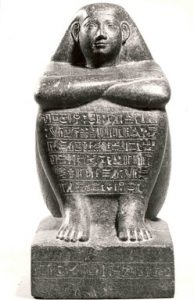
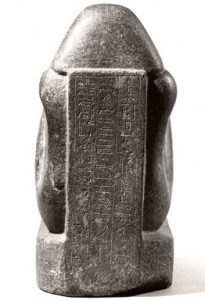
From the Egyptian art collection, Block Statue of Padimahes seemed very interesting to me; I liked the way it displayed. According to the description it is from late XXV Dynasty-early XXVI Dynasty, ca. 680-650 B.C.E. This is a statue of an Egyptian worshipper, Padimahes, made from a monolithic granite block and depicting him watching a divine procession with his face tilted upward, add depth to the show and make it more of a visual event. Visually it looks like a grey granite block statue of a man looks like he is sitting on top of a square rock with knees drawn up to the chest, with arms crossed right over left, palms flat, arms not covered, bare feet, wide wig, head distinctly raised, beardless, big ears, and eyes opened. The rock he seated on is square in front, round corners in the rear. There is some hieroglyphic text written around the stone, on the pillar back of the rock where he is leaning on, as well as over both legs. Back pillar has three columns of text, written vertically. There is one line text around the stone horizontally and hieroglyphic text also written on his dress, over his legs, in six bounded horizontal rows. The way this statue positioned seems like he placed at a temple where he could eternally partake in the rituals performed for the gods. I like the way the head and face is structured; it makes him look confident, knowledgeable and observant.
Part 2
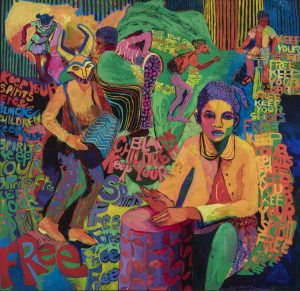
From the Soul of a Nation art collection, the art of “Black Children Keep your spirits Free” by Carolyn Mims Lawrence stood out to me the most, and I chose to this because I like the colorfulness and creativity that has portrayed in this artwork. This artwork shows children having a good time, moving around, playing drums, along with pops of colors. There are pink, purple, yellow, orange, green, blue, red, neon all types of colors are used. Based on the art, it can be concluded that the main focuses of this art are Children. Also, it seems like the artist Lawrence’s purpose was that she wanted to foster family solidarity, racial pride, self-determination, and confidence in each other. The space used subjectively and the words repeated in a very rhythmic way along with other symbols to deliver the message directly as it shows the clear message, it repeatedly is written “keep your spirit free,” which I think is the theme of this exhibition as well. On art, you can see the frontality of the figures and directness in their position and the way that they greet the audience. I think one of the thought behind making this painting was to present children with a visual reminder and a connection of their heritage. Overall, I found this artwork very beautiful, creative, and unique.


